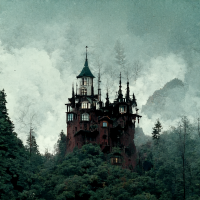
Wyvern
Wyvern
About
- Username
- Wyvern
- Joined
- Visits
- 3,134
- Last Active
- Roles
- Member
- Points
- 5,367
- Rank
- Cartographer
- Badges
- 24
-
Dhakos, The City of Spires - Watabou Cities Annual
Well this is weird, as I've just dropped-by the Forum here following a lengthy discussion on one of my Discords with someone about the old Chaosium versions of the "Stormbringer" RPG, a few minutes ago!
Not sure if it'll help with your spires query, but I had to draw my own shadows of not dissimilar form for one of my Atlas maps a while back, the Thalassan Castle Ruins. The FCW might give you a further pointer or two, perhaps. Or perhaps not! Good luck, regardless 😁
-
keyboard shortcuts or commands
Not commands as such, though as a fellow "shaker", I've found a small mouse that fits easily under my hand, so the heel of the hand is supported on the mouse mat, and with that arm further supported by a heavily-padded chair arm, helps in things like drawing and clicking on icons for commands. It does get tiring though is the only snag, and can be painful if you have to persist and use increasing pressure on the affected limb joints.
-
Top down symbols for overland maps.
Don't forget there's also the Fantasy Realms style from 2009, which has the essential top-down mountain and hill drawing tools.
It's important to recognise too that as soon as you move from the pictorial isometric or side-on images to top-down, you're immediately wanting greater precision in exactly what is where, hence I'm not sure trying to create a set of symbols for top-down features will work well enough. That argument is why there are very few hill and mountain symbols in Fantasy Realms, for instance, with the recommendation to make full use of the drawing tools in that style.
Top-down vegetation is tricky too - lots of rough-edged small rings with a couple of texture lines inside is liable to be all you'd see at typical overland scales. This does work, as it's what was used originally on things like the early SPI-style hex-based board-and-counter wargames, and it's fine as representation, but it's not particularly realistic. Plus it can be very easily drawn vector style, if you want to go down that route.
It's hard to know what would work better as identifying jungle symbols than palms (try a quick online search for jungle map symbols, and most of what turns up IS palms!), given that many jungle evergreens have general side-on shapes similar to in-leaf deciduous ones. Maybe adding a few hanging lianas in places, an attempt at stratification (albeit that means multiple trees per symbol), or splashes of colour for flowers and fruits might help, though again for overland-scale maps, most of that detail's liable to be lost. Altering the varicolor colouring might help with the extant deciduous woodland options, possibly. And for top-down versions, basically, again, you're looking at a rough-edged circle with a couple of interior texture lines.
-
How can I change the text on scalebar?
-
WIP Goldenlilly Dungeons
As Sue suggested, something to help the bars look more vertical probably would be helpful.
Maybe think of reducing the intensity of the shadows overall, given they don't really work with the light sources in the dungeon.
Some of the shadows - for the buckets and smaller round table - are also perhaps too large for what they are. The buckets probably shouldn't be casting the same length of shadow as the rack and dissecting table, for instance.





